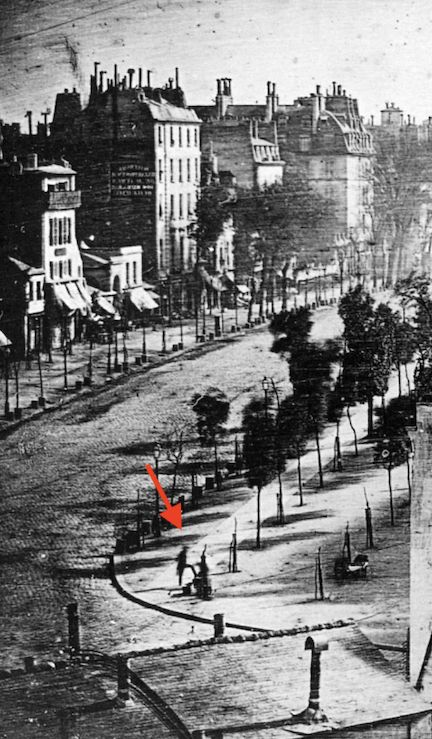"When There Is No News" God's Presence Is Constant
On April 18, 1930, the BBC announced, “There is no news.”
On April 18, 1930, nothing at all newsworthy occurred — at least according to the BBC. At the start of its regular news broadcast at 8:45 p.m., the BBC announced, “Good evening. Today is Good Friday. There is no news.” This unexpected declaration was followed by 15 minutes of piano music, before the radio station resumed its broadcast of Wagner’s opera Parsifal.

In our fast-paced, information-saturated world, it might be hard to imagine a day when literally nothing made the news. But even on that date so long ago, the stunning announcement, “There is no news,” took everyone by surprise.
Now, think about that for a moment. An entire global news agency, tasked with informing the public, had nothing to report. No headlines. No drama. No crisis. Just ... silence and a little music.
That moment reminds me a lot of the seasons in our spiritual lives when it seems like nothing is happening. We read our Bibles, we pray, we go to church—but we don’t feel goosebumps or hear God speak loudly. It’s tempting to think, “God must not be doing anything in my life right now.”
But friends, silence doesn’t mean absence! Just because the headlines of our lives feel quiet doesn't mean God isn't at work behind the scenes. Some of God’s greatest work is done in the stillness.
Psalm 46:10 says, "Be still, and know that I am God."
It doesn’t say, “Be busy,” or “Make some noise.” It says, “Be still.”
In those quiet seasons, God is still sovereign. He’s still shaping you, preparing you, guiding you—even when there’s “no news.”
So the next time your life feels silent, and heaven seems quiet, remember: Just because you don’t see it or hear it, it doesn’t mean God isn’t doing something powerful.
"For God alone, O my soul, wait in silence, for my hope is from him" (Psalms 62:5, ESV).
Of Prayers and Paper Airplanes
OBJECT LESSON ...
Take a moment right now to write down a prayer request on a slip of paper. Your mission is to get your prayer request up to the pulpit. You can throw it. You can try to shoot it with a rubber band. Or you can fold it into a paper airplane and try to fly it. Do your best, then let 'er fly!

We often make certain assumptions about prayer. We think it’s some kind of game with a long list of complicated rules, or that it requires some magical strategy or gimmick. So we devise elaborate methods in order to get God to hear us and accept our prayers.
Maybe we think we’ll be heard for our many words, or our impressive words. Or maybe the task looks so daunting that we don't even try.
But truth is, we could have simply walked up here and placed our prayer request on the pulpit.
God doesn't want us to just try to be heard from afar. Rather, He invites us to come near to Him.
Prayer isn’t about getting the right words, but having the right heart -- a heart transformed into a child of God.
"Come close to God, and God will come close to you" (James 4:8, NLT).
"Let us then with confidence draw near to the throne of grace, that we may receive mercy and find grace to help in time of need" (Hebrews 4:16, ESV).
""Therefore, brothers, since we have confidence to enter the holy places by the blood of Jesus ... let us draw near with a true heart in full assurance of faith ..." (Hebrews 10:19, 22, ESV).
It's The Stillness That Lasts
The "daguerreotype" was one of the earliest types of “still” photography.
A daguerreotype is created using a copper plate with a highly polished silver surface, which has been sensitised to light (by treating it with iodine fumes). The plate is exposed in a camera and the image developed using mercury vapour. The process produced sharp results that were a mirror image of the subject. It became the first commercial photographic process and was used in countries around the world for the next 20 years.
The image below, taken in 1838, is believed to be the first photograph of a person.
This daguerreotype, made by Daguerre himself, is of a busy road in Paris. Due to the long exposure time needed, anything moving in that time, such as people or vehicles were not in one place long enough to make an impression. The man in the lower left-hand corner was captured because he was standing still while he had his shoes shined.
There is no doubt the streets of Paris would have been bustling with all manner of activities that lovely, clear day. People running errands in and out of shops, horses and carriages carrying businessmen and tourists all about, children, and perhaps even stray dogs, frolicking in the parks and on the sidewalks. Yet the streets look all but deserted, save for the lone gentleman who stopped, standing quite still, to have his shoes shined.

Now consider Jesus’ lesson about the stewardship and ministries of his two, beloved female disciples, Mary and Martha.
But what do the ministries of Mary and Martha have to do with still photography, you might ask?
As Jesus and his disciples were on their way, he came to a village where a woman named Martha opened her home to him. She had a sister called Mary, who sat at the Lord’s feet listening to what he said. But Martha was distracted by all the preparations that had to be made. She came to him and asked, 'Lord, don’t you care that my sister has left me to do the work by myself? Tell her to help me!'
'Martha, Martha,' the Lord answered, 'you are worried and upset about many things, but few things are needed—or indeed only one. Mary has chosen what is better, and it will not be taken away from her.' -- Luke 10:38-42
While Martha busied herself with “many things,” Mary simply sat at Jesus' feet.
Martha was quite confident that her frantic energy and labor for the Lord’s sake was all that mattered. So she must have been taken aback to hear the Lord’s loving rebuke: “Martha, Martha, you are worried and upset about many things, but few things are needed — or indeed only one. Mary has chosen what is better, and it will not be taken away from her.”
Wait, what?! Isn’t “serving” the Lord (and others) what it’s all about?
Not according to the Lord Himself.
Absent the rest and devotion of just sitting at His feet, all our efforts and labors for Him and His kingdom are just fleeting activities.
Busy-ness of life is just that … busy-ness ... which is quickly forgotten, lost in the long exposure.
Like the images on a daguerrotype, it’s those moments when we just stop and be still before God that will last, making an eternal impression.
"Be still and know that I Am God" (Psalms 46:10).